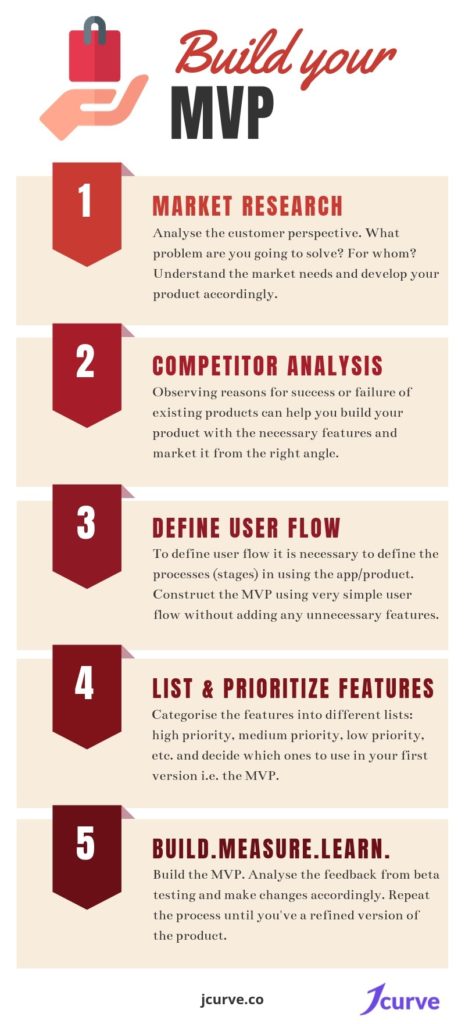Build your MVP step by step
MVP, CAC, and CLV are all popular buzzwords that fill the entrepreneurial talks and startup meetings. MVP stands foremost. Merely knowing what it stands for is not sufficient. A good MVP may make or break your venture. Let’s dive in and explore what an MVP is.
What is MVP?
MVP stands for Minimum Viable Product. MVP is a new product developed with the basic functionalities to test how the target audience would respond. The MVP is used for pilot runs and the final product is developed after receiving feedback from users on the MVP.
MVP helps in finding the right balance between the product developed and the product users need. Simply stated, MVP helps to launch a refined product by doing the pilot run on a small budget. MVP also gives the developers an insight into the customer segment they should tap into by showing which segments are more receptive.
Developing an MVP involves taking into consideration both the business and the technical aspects of the product. Here’s a step by step guide to help you maneuver the process of building your MVP.

1.Market Research
While building an MVP, it is necessary to think from the customer perspective. To understand that, two important questions must be asked. What problem are you trying to solve? And for whom? Conducting surveys will help you analyse the market needs and where your product is going to fit in. Market research provides you invaluable insights on customer needs.
2. Competition Analysis
An amateur oversight that many entrepreneurs do is to believe in the uniqueness of their product and not analyse the competitors. It is crucial to analyse similar existing products in the market and study what sets them apart. Observing reasons for success or failure of existing products can help you build your product with the necessary features and market it from the right angle.
There exist several tools such as SimilarWeb that help you to analyse your competitors’ websites (inbound traffic, sources of traffic, demographics of visitors such as location, etc).
Another way to optimise your product is to study the feedback from customers on your competitors’ products and ensure you’re solving their issues in your model.
3. Design the process & define user flow
To define user flow it is necessary to define the processes (stages) in using the app/product. Always make the convenience of users the priority while designing the processes and user flow. Construct the MVP using very simple user flow without adding any unnecessary features.
4. Listing and prioritising necessary features
Make a list of all necessary feature to be added on during each stage for your MVP. Next step is prioritising the features. This once again requires thinking from the customer’s perspective and understanding their needs.
Categorise the features into different lists: high priority, medium priority, low priority, etc. and decide which ones to use in your first version i.e. the MVP.
5. Build. Measure. Learn. Repeat
Next comes the development stage. Once the product is developed it is time to test it. The first stage of testing is done by ensuring the quality standards are maintained. If found satisfactory, the product is ready for alpha or beta testing.
Alpha testing often involves friends and family. After alpha testing, the product is finally ready to be tested by the real world. This stage is called beta testing. The beta testing period lasts around 1-2 weeks. Measure the key indicators and understand the changes required. According to feedback received from beta testing, make changes accordingly in the next version.
Post MVP development
There are several metrics to the success of MVP. Traffic generated, engagement from users and the percentage of active users are all direct indicators of the success of your app/ product.
It is crucial to develop the MVP properly to understand the market and receive proper customer feedback before launching your product. It is one step where several entrepreneurs have stumbled. Nowadays, there are several incubators and accelerators that help you to build your MVP. JCurve is one such incubator. Besides validating your startup idea and helping in MVP development, JCurve also provides seed investment to new startups and provide them access to their global network of angel investors and VCs.
A well-made MVP could be the difference between success and failure of your startup. If you’re an aspiring entrepreneur, start building your MVP today.
